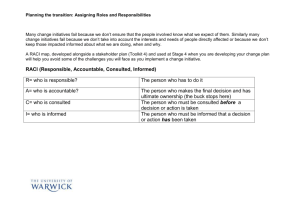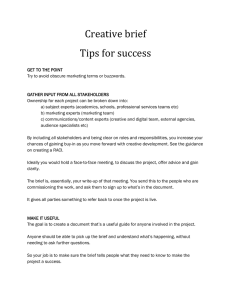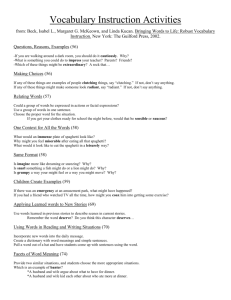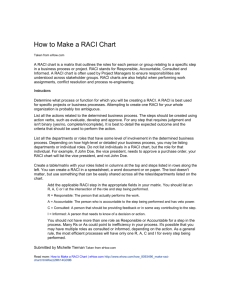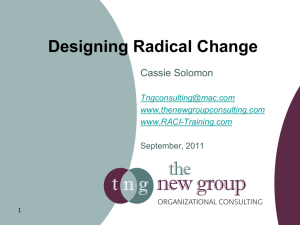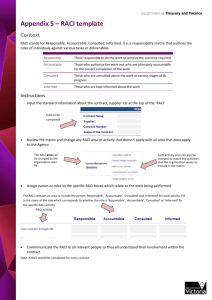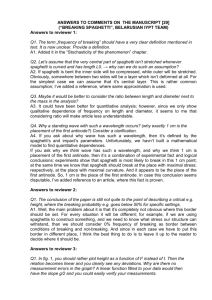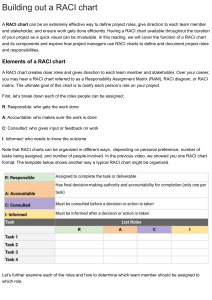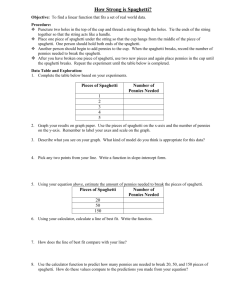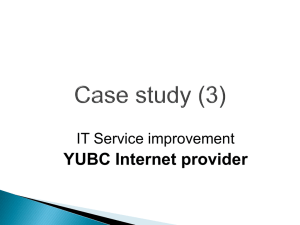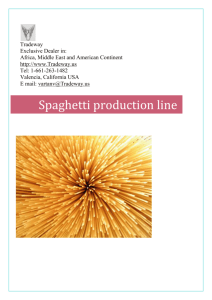Analyzing & Improving Business Processes
advertisement
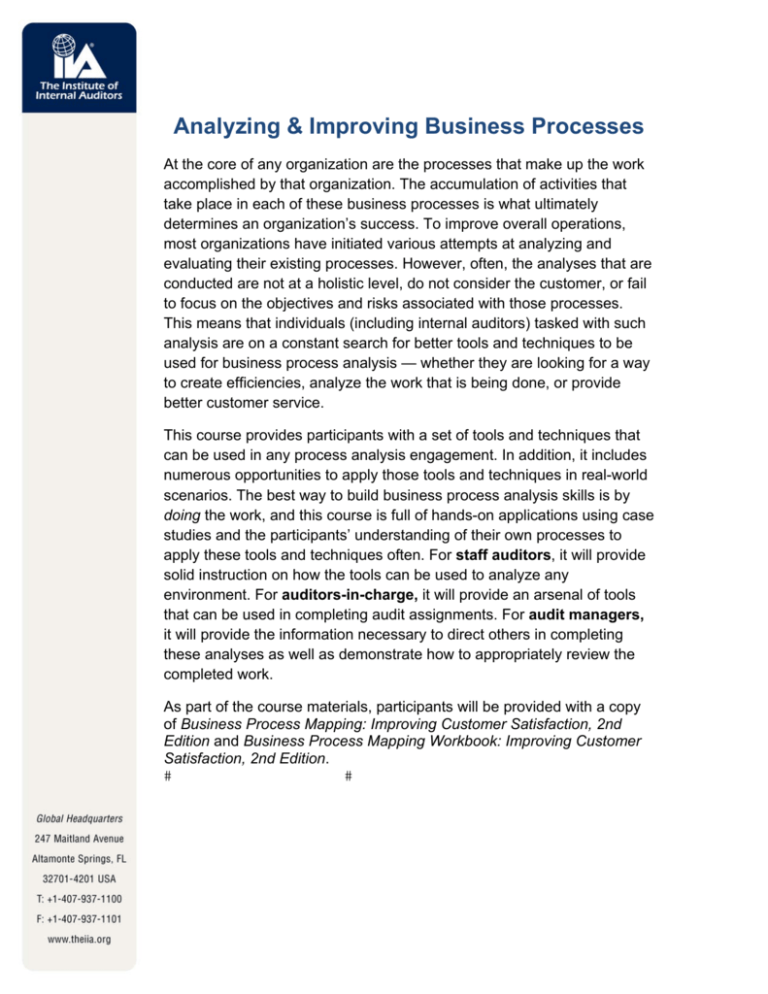
Analyzing & Improving Business Processes At the core of any organization are the processes that make up the work accomplished by that organization. The accumulation of activities that take place in each of these business processes is what ultimately determines an organization’s success. To improve overall operations, most organizations have initiated various attempts at analyzing and evaluating their existing processes. However, often, the analyses that are conducted are not at a holistic level, do not consider the customer, or fail to focus on the objectives and risks associated with those processes. This means that individuals (including internal auditors) tasked with such analysis are on a constant search for better tools and techniques to be used for business process analysis — whether they are looking for a way to create efficiencies, analyze the work that is being done, or provide better customer service. This course provides participants with a set of tools and techniques that can be used in any process analysis engagement. In addition, it includes numerous opportunities to apply those tools and techniques in real-world scenarios. The best way to build business process analysis skills is by doing the work, and this course is full of hands-on applications using case studies and the participants’ understanding of their own processes to apply these tools and techniques often. For staff auditors, it will provide solid instruction on how the tools can be used to analyze any environment. For auditors-in-charge, it will provide an arsenal of tools that can be used in completing audit assignments. For audit managers, it will provide the information necessary to direct others in completing these analyses as well as demonstrate how to appropriately review the completed work. As part of the course materials, participants will be provided with a copy of Business Process Mapping: Improving Customer Satisfaction, 2nd Edition and Business Process Mapping Workbook: Improving Customer Satisfaction, 2nd Edition. Course Duration: 2 Days CPE Hours Available: 16 Knowledge Level: Basic Field of Study: Auditing Prerequisites: None Advance Preparation: None Delivery Format: Seminar, On-site, eLearning Course Outline: Process Objectives and Risks • • • • • • • Apply the concepts of “objective” and “risk” to any process. Define a process. Discuss why processes are analyzed. Discuss how the relationship with management impacts process analysis. Discuss how strategic objectives support process objectives. Evaluate objectives developed for individual processes. Develop objectives for individual processes. Defining the Process • • • • • Apply the concept of “process components” to the review of individual processes. Distinguish the inputs and outputs of individual processes. Distinguish trigger events within individual processes. Identify measures of success, given process objectives. Prepare a drill-down analysis of a process, identifying key subprocesses. Process Mapping • • • • • • Apply process mapping techniques to produce a visual depiction of any process and be able to identify opportunities for improvement. Explain how process maps are constructed. Build simplified decision trees for process maps. Create verb/noun process descriptors. Construct process maps. Assess process maps for process improvement opportunities. Customer Mapping • • • • • • • Apply customer mapping techniques to the examination and analysis of business processes, focusing on improving the organization’s interaction with customers. Determine what the customer wants. Explain steps in customer mapping. Determine key customer tasks. Determine actions, inputs and outputs for each task. Determine the measures of success for each task and rank them in order of importance. Create a customer profile worksheet. Spaghetti Mapping • • • • Apply concepts, techniques, and skills learned related to spaghetti mapping to analyze process workflows and identify opportunities for improving the workflows. Explain concepts and steps used in creating a spaghetti map. Create an as is spaghetti map. Create an improved process using an existing spaghetti map (to be). RACI Matrices • • • • • Apply concepts, techniques, and skills learned to optimizing accountabilities and responsibilities in business processes. Define a RACI matrix and the principals involved. Distinguish the various aspects of the RACI terms. Create a RACI matrix. Analyze a completed RACI matrix.
